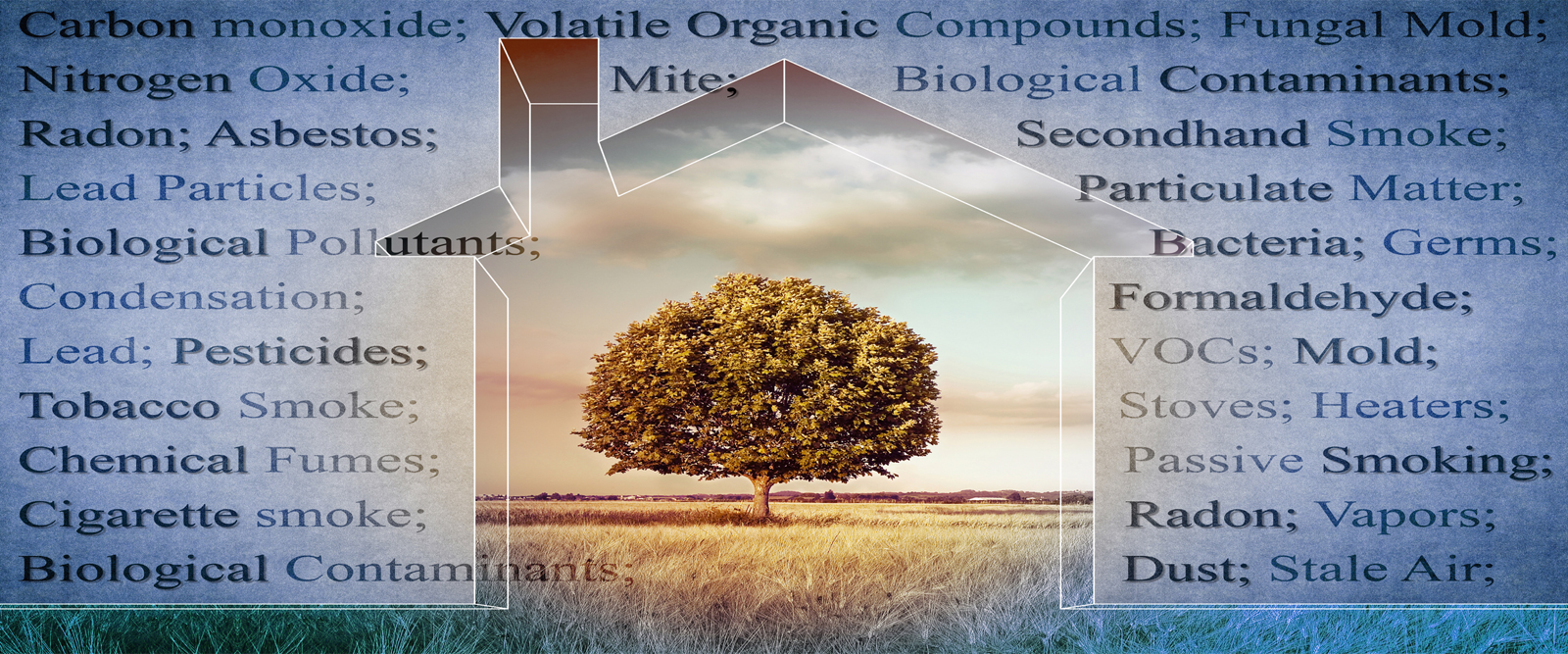Is Indoor Air Quality a Cause for Concern in Your Home?
According to Environmental Protection Agency studies, pollutants found inside homes and offices are 2 to 5 times higher than outdoor air. Indoor air quality (IAQ) is considered a major concern and one of the most important environmental issues you face on a daily basis.
The effects on healthy individuals may range from “allergy-like symptoms,’ like sneezing, coughing, or headaches, to chronic fatigue and respiratory illness.
Consider the steps you take to keep yourselves comfortable during extreme temperatures, whether hot or cold. Staying inside requires a good ventilation system to remove pollutant particles, such as dust, pollen, and pet dander.
But we also add to the problem by some of the products we bring into our homes for household use. Let’s examine some common sources of pollutants and several small steps you can take to improve indoor air quality in your home.
Carpet and Furniture VOCs
Volatile organic compounds (VOC) are gas compounds released by materials, adhesives, and finishes, such as paints and stains, in common household items. That “new” smell from furniture and carpet is actually the “off-gassing” of VOCs and it may continue for as long as 5 years.
Manufacturers have been working diligently to reduce materials that release gaseous compounds, but you need to be aware of the household pollutant. Suddenly vintage furniture has a new appeal.
Alternative Steps to Improve Indoor Air Quality
Being aware of household chemical pollutants is the first step towards reducing them from your home. Avoiding them altogether might not be possible, but here are some small steps you can take to improve IAQ.
- Open your windows as often as is comfortable, daily if possible in mild weather. Open windows serve to filter pollutants and odors, with the added benefits of bringing in pleasant scents from the outside.
- Shop wisely. Manufacturers offer detergents, soaps, and cleaners in “clear and free” options that dramatically reduce chemicals released into the atmosphere. Pay attention to VOC levels when purchasing new furniture, carpet, and paints.
- Consider using alternative cleaners, with choices that are nontoxic, hypoallergenic, and environmentally friendly. Homemade cleaners can be made from common ingredients such as baking soda and vinegar—they have been used as cleaners for many years.
- Aerosol air fresheners and candles, while not a significant source of dangerous chemicals, can be replaced by natural essential oils.
- HVAC filters are configured from very basic to advanced filter systems, including HEPA filters, electrostatic filters, and activated charcoal. Each filter functions to remove various pollutants. Become familiar with your options and pursue what is best for your home.
- In addition to air filters, you have the option of installing ultraviolet lights inside of your HVAC system. The UV lights help you maintain a healthy environment by preventing the growth of harmful organic pollutants including pollen, mold, bacteria, and virus.Once the organic material is neutralized, it can be removed through filtration to prevent it from recirculating into the living space.
Let us answer any question you might have about Indoor Air Quality in your home. If you are considering improving the HVAC filtration in your home, give us a call and let our trusted field technicians assist you.
Have Questions About Indoor Air Quality?
Doctor Cool and Professor Heat are independent American Standard dealers with over four decades of HVAC Efficiency, HVAC maintenance, Indoor Air Quality, and furnace, and heater repair installation and repair experience.
Call Doctor Cool & Professor Heat today at 281-338-8751 or email Doctor Cool. The longer you ignore or put off making the call, the longer it will be before you improve your indoor air quality.
